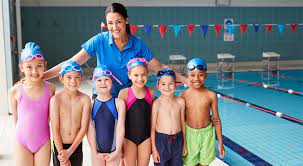From toddlers splashing in wading pools to teenagers navigating surf zones, every Australian’s water journey starts with one goal—safety. But water safety isn’t a single skill. It’s a progression of knowledge, awareness, and ability, developed step by step.
So, how many levels are there in water safety? The answer depends on the context—whether you’re learning to swim, supervising others, or teaching professionally. But across all settings, water safety follows a staged approach: from awareness, to survival skills, to confident, independent swimming.
Each stage builds on the last—and completing a certified water safety course helps ensure every level is taught clearly, safely, and effectively.
Why Water Safety Is Taught in Levels
Much like reading or riding a bike, water safety can’t be mastered overnight. It’s taught in logical progressions so learners can absorb skills gradually and apply them confidently.
This structured approach:
- Reduces overwhelm in early learners
- Builds strong habits early (like always checking depth before diving)
- Ensures that survival skills are locked in before more complex strokes or rescue work
- Encourages long-term confidence in a wide range of aquatic environments
The Common Levels in Water Safety Education
While program names vary slightly between states and providers, most Australian water safety programs—particularly those taught through schools or swim centres—follow a similar path with four to six core levels. Here’s a general breakdown.
Level 1: Water Familiarisation
This level is all about comfort. Learners are introduced to water through play, with a focus on building trust and confidence.
Key goals:
- Enter and exit water safely
- Blow bubbles, splash face, submerge mouth and nose
- Basic movement through water using arms and legs
- Understand water rules and safe behaviour
Ideal for: Children under five or first-time adult learners
Level 2: Water Confidence and Basic Safety
Here, students start developing skills that help them stay afloat and remain calm if they find themselves in deep water.
Key goals:
- Float on front and back unaided
- Submerge fully and retrieve objects
- Learn to call for help and identify hazards
- Begin basic propulsion (kick + paddle)
Often, this is the first level where survival skills are introduced alongside fun and games.
Level 3: Survival and Stroke Fundamentals
With confidence and basic mobility established, learners now focus on technique, safety drills, and building endurance.
Key goals:
- Tread water for extended time
- Demonstrate survival strokes like sidestroke or sculling
- Swim short distances using basic freestyle and backstroke
- Learn rescues with aids (e.g. reach and throw rescues)
This is also the stage where learners practise safety scenarios—like what to do if someone else is struggling in the water.
Level 4: Stroke Development and Open Water Awareness
Here, swimmers refine their technique and learn to apply their skills in different environments.
Key goals:
- Improve breathing, rhythm and coordination in freestyle, backstroke, and breaststroke
- Practice endurance swims (e.g. 25–50 metres non-stop)
- Learn about rip currents, tides, and unfamiliar water hazards
- Explore safe boating and watercraft behaviour
At this level, instructors often integrate open-water education and rescue strategies—an important step for beachgoers and boat users.
Level 5: Advanced Skills and Emergency Response
This is the highest level in many swim programs, where swimmers become capable of managing themselves and assisting others in emergency situations.
Key goals:
- Master all core strokes over longer distances
- Perform basic non-contact rescues
- Simulate emergency scenarios in pool and beach conditions
- Build leadership and decision-making skills
Many people who complete this level go on to enrol in instructor or lifeguard training, starting with a certified water safety course designed for educators and aquatic professionals.
Why the Level System Matters
Understanding how water safety progresses helps everyone—from parents enrolling their kids in swim school to adults considering a career change into teaching.
The level system:
- Helps learners track progress and stay motivated
- Provides a consistent teaching framework
- Ensures critical safety and survival skills aren’t skipped
- Gives clear guidelines for when a swimmer is ready for independent or unsupervised swimming
Even more importantly, it keeps learners safe at each stage of their journey. Rushing ahead before mastering survival skills can lead to overconfidence—and risk.
A Real-World Story: Small Steps, Big Impact
Take Ben, an eight-year-old from Darwin. He loved the water, but during a family trip to a nearby creek, he slipped on a mossy rock and ended up drifting into deeper water.
Thanks to a recent school-led program, Ben had just completed his Level 3 swim safety training. He remembered to float on his back, remain calm, and call for help. His uncle reached him within seconds—but those few seconds could’ve gone very differently.
Ben’s mum later said: “I always thought he could swim because he looked confident. I didn’t realise there were so many levels—and that survival skills come before strokes.”
How Many Levels Are There in Professional Training?
If you’re planning to teach or supervise others in aquatic settings, the level structure continues.
A professional water safety course typically includes:
- Foundational safety theory and supervision techniques
- Pool-based teaching practice
- CPR and emergency response certification
- Teaching strategies across learner ages and abilities
These courses also align with national safety and education frameworks. For example, Swim and Survive and similar programs across states follow similar progressive level structures, making qualifications portable across the country.
Final Thoughts
So—how many levels are there in water safety? The short answer: enough to take you from beginner to lifesaver. Whether you’re a parent, learner, or future instructor, understanding each stage helps ensure skills aren’t rushed or skipped—and that safety is built into every splash, stroke, and swim.
When structured properly, water safety isn’t overwhelming—it’s empowering. And it all begins with a certified water safety course that gives you the tools to build those skills the right way, from the very first level to the last.

